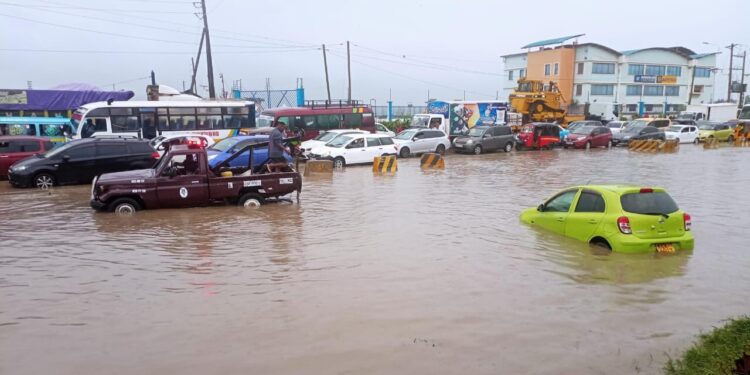The IGAD Climate Prediction and Applications Centre (ICPAC) has warned of heavy rains expected across Kenya and parts of East Africa from June to September 2025. Weather and climate experts have predicted the possibility of above-average rainfall during this period.
According to the outlook released during the 70th Greater Horn of Africa Climate Outlook Forum (GHACOF 70), a 55% probability of above-normal rainfall in central Sudan, eastern South Sudan, northern and southwestern Ethiopia, western Kenya, and eastern Uganda.
At the same time, wetter-than-average conditions are also expected in parts of Uganda, South Sudan, southern Sudan, Djibouti, and western Eritrea.
“It contributes to over 50% of annual rainfall over the northern parts of GHA region, and more than 80% in most parts of Sudan, making the seasonal forecast particularly significant for early action and planning in sectors such as Agriculture and food security, water resources, disaster risk reduction, and in other climate-sensitive socio-economic sectors,” part of the report read.
Weather: IGAD Warns of Heavier Rains in Kenya and East Africa
Further, there is a high chance of below-average rainfall over the coastal areas of Somalia and Kenya, northwestern South Sudan, and southeastern Ethiopia.
Most parts of the regions in East Africa are likely to see the rains start at the usual onset, but some areas may receive rainfall earlier than the onset, while western Ethiopia could see a delay in the start of the rains.
“The temperature forecast shows a likelihood of warmer-than-average conditions over much of the region, with higher probabilities over southern Ethiopia and Somalia, eastern Kenya, and northern Sudan. Conversely, average to below-average temperatures are expected over the IGAD-Karamoja cluster, Djibouti, Eritrea, central Sudan, and northeastern Ethiopia,” read the report.
Also Read: El Nino and Other Climate Patterns to Watch in 2025
Risk of Floods in June to September
“The Greater Horn of Africa is experiencing unprecedented climate extremes, ranging from droughts and floods to unpredictable rainfall, putting our food systems, water resources, and livelihoods at serious risk. We must institutionalize climate services and work together across borders and sectors to ensure climate risks are integrated into every decision. The future of our region depends on it,” Mohamed Ware, Deputy Executive Secretary of IGAD said.
While wetter weather conditions bring opportunities for agriculture and water access, IGAD has raised the risk of flooding and waterborne diseases.
Additionally, ICPAC has urged regional and national authorities to take proactive measures to prepare and respond effectively across East Africa.
Also Read: World Met Explains El Niño Patterns in Kenya and East Africa
WMO Report on State of the Climate
This weather forecast comes a day after The World Meteorological Organization released a report titled the State of Climate Africa 2024, explaining the El Niño patterns experienced in Kenya and East Africa.
As per the report, Kenya and East Africa saw a devastating series of floods caused by exceptionally heavy, long rains from March to May, which led to significant damage across Kenya, Tanzania, Burundi, and other parts of the region.
Follow our WhatsApp Channel and X Account for real-time news updates.























![Billions Each Top Kenyan Bank Has Made So Far In Profits This Year [List] Q3 2025 Results For Equity, Kcb, Co-Op, Absa And Other Banks]( https://thekenyatimescdn-ese7d3e7ghdnbfa9.z01.azurefd.net/prodimages/uploads/2025/11/C0-OP-KCB-Equity-Absa-360x180.png)



















































